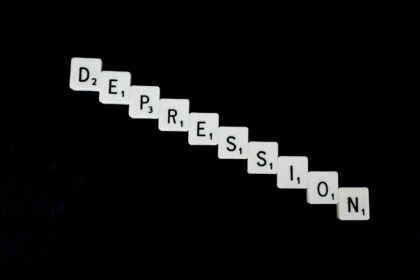Emotions can be like a vast ocean – sometimes calm and soothing, other times wild and overwhelming. For those living with bipolar disorder, this emotional tide is often more intense and unpredictable, shaping their days in profound ways. But behind the highs of ecstatic joy and the lows of deep despair lies a complex and deeply human experience that deserves compassion and understanding. In this gentle guide, we’ll explore what bipolar disorder really means, peeling back the misconceptions and shining a light on the emotional journey individuals face. Whether you’re someone who lives with bipolar disorder, love someone who does, or simply want to learn more, this article aims to offer comfort, clarity, and connection.
Understanding the Emotional Highs and Lows of Bipolar Disorder
Living with this condition means navigating a deeply personal rollercoaster of feelings-one moment filled with boundless energy and euphoric joy, the next clouded by hopelessness and despair. These emotional fluctuations can feel overwhelming, as if your mind shifts between two worlds. During the brighter phases, creativity and confidence often surge, but it’s important to remember that these highs can also bring impulsivity and restlessness. On the flip side, the lows aren’t just about sadness; they can manifest as profound fatigue, loss of interest, and heavy emotional burdens that make even the simplest tasks feel monumental.
Understanding these emotional waves involves recognizing the unique signs and patterns that appear in daily life. Some common experiences include:
- Rapid mood changes that seem unpredictable.
- Intense feelings of happiness or irritability during elevated moods.
- Periods of withdrawal and difficulty connecting with others during depressive phases.
- A fluctuating energy level that impacts sleep, focus, and motivation.
By embracing these shifts with compassion and awareness, those affected can start to regain control and create a foundation of support that honors their emotional reality.
Recognizing the Signs and Symptoms with Compassion
It’s important to approach the emotional experiences linked to bipolar disorder with empathy and patience. Those affected may exhibit mood swings that swing from the exhilaration of heightened energy and creativity to deep valleys of sadness and withdrawal. These shifts aren’t simply personal choices or fleeting moods-they are signals from the mind and body asking for support. Notice moments when someone may be unusually restless, talkative, or optimistic beyond their norm, as well as times when they seem withdrawn, tired, or hopeless. Being attuned to such changes, without judgment, can make all the difference.
Keep in mind that symptoms can vary greatly, but some common emotional and behavioral signs to gently watch for include:
- Sudden bursts of excitement or irritability
- Difficulty sleeping despite feeling energized
- Periods of intense sadness, crying, or hopelessness
- Changes in appetite or self-care habits
- Uncharacteristic risk-taking behaviors
Recognizing these moments as part of a larger story opens a path to better understanding and meaningful connection. Remember, listening with an open heart can be the first step toward healing.
Practical Strategies for Managing Mood Swings Daily
Consistency is a quiet but powerful ally in the face of mood swings. Creating a daily routine that includes regular sleep patterns, balanced meals, and scheduled downtime can help anchor your emotions amidst the unpredictable tides. While it may not eliminate mood changes, this stable structure forms a foundation that supports emotional regulation. Embracing mindfulness practices such as deep breathing, meditation, or even gentle yoga encourages self-awareness, allowing you to catch the first whispers of mood shifts before they swell into overwhelming waves.
Building a strong support network is equally vital. Connecting with trusted friends, family, or mental health professionals provides a safe space to share your feelings without judgment. Remember, you are not alone in this journey. Small, practical habits-like keeping a mood journal to track triggers and patterns or setting realistic daily goals-can empower you to regain control. These tools, combined with patience and self-compassion, transform mood management from a daunting task into a hopeful practice of resilience and self-discovery.
- Maintain a consistent sleep schedule even on weekends.
- Incorporate mindfulness exercises to stay grounded.
- Keep a mood journal to identify personal triggers.
- Set small, achievable goals to build confidence.
- Reach out for support when feeling overwhelmed.
Building a Support System That Truly Understands You
Surrounding yourself with people who genuinely comprehend what you are going through can transform the journey of navigating bipolar disorder. It’s not just about having company-it’s about creating a network where understanding replaces judgment, and empathy takes the lead over assumptions. Building this kind of support requires patience and open communication. Share your experiences in your own time, and don’t hesitate to gently correct misconceptions. Those who truly care will want to listen and learn, even when the emotions and mood swings feel overwhelming or hard to explain.
Consider these ways to nurture connections that support you:
- Open Dialogues: Encourage honest conversations where feelings and challenges can be expressed without fear of stigma.
- Education: Share resources or personal insights to help loved ones understand the complexities of bipolar emotions.
- Consistency: Regular check-ins help maintain trust and build a safety net of reliability.
- Boundaries: Clearly communicate your needs and limits so relationships remain healthy and respectful.
To Conclude
Thank you for joining me on this heartfelt journey into the complexities of bipolar disorder. Understanding the ebb and flow of emotions that come with this condition isn’t just about medical facts-it’s about recognizing the very human experience behind it. Compassion, patience, and awareness can transform how we support loved ones and ourselves. If there’s one takeaway, it’s this: behind every mood swing is a person striving to find balance and hope. Let’s continue to listen openly, break the stigma, and build a world where emotional struggles are met with kindness and care. You’re not alone, and together, understanding can light the way.
















